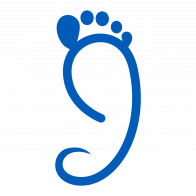Picking the right airplane
When learning to fly with a disability, finding the right airplane that meets your needs can be a challenge. For Jessica, she felt her only option at the time was the Ercoupe. The simple controls made it easy to control, and it remains a favorite airplane among people with disabilities.
The Classic Platform
As I said, the Ercoupe is a simple airplane. The rudders and ailerons are interconnected, which means there is no need for rudder peddles. Instead, there is a single break peddle on the floor. Add nose wheel steering, a wing with no flaps, and the most basic of control panels, and you end up with a really popular airplane for people with disabilities, especially amputees.
There are some things to consider. For one, there will be additional restrictions on your license if you do your checkride in an Ercoupe without rudder pedals. These are also old airplanes, and they’ve all seen many miles. What looks like a steal of a deal could have issues waiting in the wings (literally).
The age of Ercoupes also means many people have modified theirs over the years. As with any airplane, get to know the Ercoupe to make sure it will work for you before you commit.
STC’s and 337’s
The difference between an STC and a 337 can be explained in detail by your Airframe and Powerplant Mechanic (A&P). Basically, they are different ways of modifying an airplane. It would be worth your while to find an aircraft that’s close to what you need and then see if any existing modifications are available. Planes can be modified, but there are limits.
For example, the Sky Arrow has modifications that can add hand controls for the rudder. This airplane is the primary training platform for Able Flight and its flight training program. The manufacturer of the Sky Arrow designed and certified these modifications (an STC). This means that the airplane maintains its type certificate if the rudder controls are added. So, fully certified modifications do exist, but they are rare.
More commonly, people want to make minor changes. These smaller mods are all up to your A&P (a 337). An example of this is changing a three-point harness to a four-point harness when there’s no preexisting certification for the change. Keep in mind, your A&P isn’t going to just go through and modify everything. It’s up to their discretion. You will have better leverage if someone already made the same modification on a similar airplane, though.
No tools, no problem
Sometimes a tiny, quickly added (and removed!) device will be what you need to modify an airplane. If it can be added and removed without tools (generally speaking), then it can be added at the pilot’s discretion. When Jessica started her training, she didn’t have the muscle strength to hold herself in position. Rather than getting a 337 to change the seatbelt for better leverage, she and a mechanic friend created a device that helped her hold position more easily. It could be added and removed very quickly, making it a temporary change. Eventually, she no longer needed it.
This is also how most pilots add cameras to their airplanes. Our friends at FlightFlix have a guide if you want to read more.
Experimental
Then again, if you want the freedom to make significant changes to any airplane, experimental aircraft is the way to go. There are three ways to get an experimental airplane:
Buy one that already exists.
Modify a certified aircraft and redesignate it as something like Experimental Exhibition.
Build one from a kit.
This is where the true magic is in adapting airplanes to work with a specific disability. In fact, it deserves its own post, which probably means it’s either queued up to follow this one in a few days or is somewhere nearby on this site already.
Good luck, and fly safe!
Disclaimer: we at Rightfooted Foundation are not lawyers, and nothing herein should be considered legal advice. Also, these things change with time. Go speak with someone who knows all the details and is up to date before taking any action.

